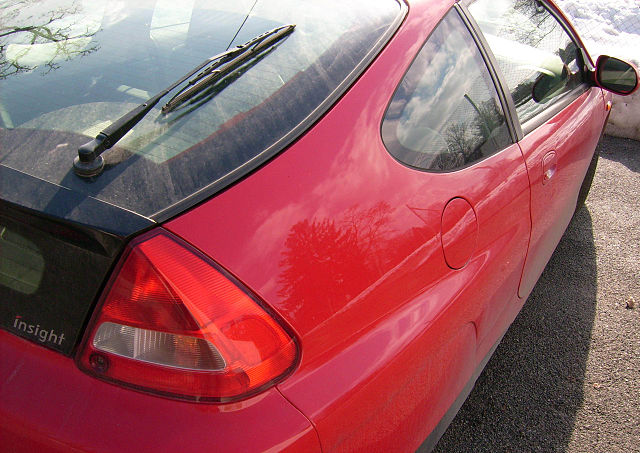Super ultra-low emission vehicle
Super ultra-low emissions vehicle (SULEV) is a U.S. classification for passenger vehicle emissions. The classification is based on producing 90% fewer emissions than the average gasoline-powered vehicle. The SULEV standard is stricter than the standard for LEV and ULEV, however not as strict as PZEV which meets the SULEV standard for tailpipe emissions, but has zero instead of reduced evaporative emissions. Japan also offers an SU-LEV classification, for vehicles that show a 75 percent reduction in emissions vis-à-vis the 2005 emissions standards.
Honda Insight
A zero-emission vehicle, or ZEV, is a vehicle that does not emit exhaust gas or other pollutants from the onboard source of power. The California definition also adds that this includes under any and all possible operational modes and conditions. This is because under cold-start conditions for example, internal combustion engines tend to produce the maximum amount of pollutants. In a number of countries and states, transport is cited as the main source of greenhouse gases (GHG) and other pollutants. The desire to reduce this is thus politically strong.
Critical Mass cyclists, San Francisco, April 29, 2005, and Muni Metro electric tram on J Church line
The Nissan Leaf electric car is a zero emission vehicle (ZEV).
The Indian REVA electric car is a zero emissions vehicle (ZEV).
The Honda FCX Clarity, launched in 2008, is a fuel cell hydrogen vehicle compliant with the ZEV standard and sold in Japan and in the U.S. (only in Los Angeles).





